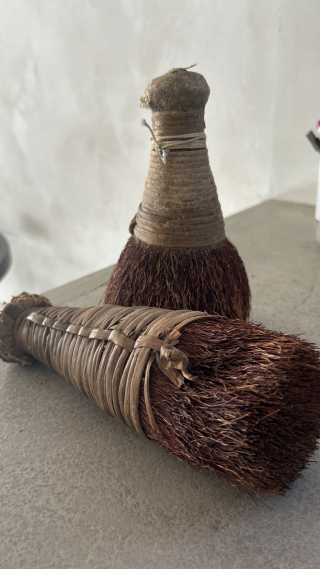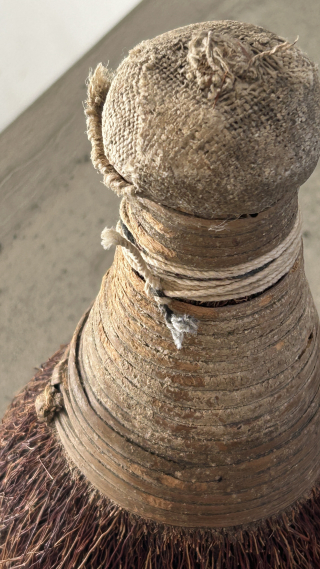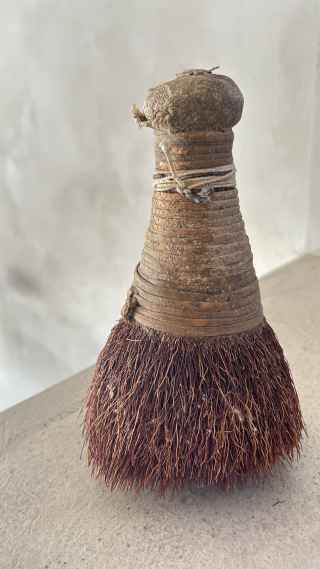Your guesses were reasonable; well, most of them were
Diogenes tell Danny that the brushes are more significant than my hand,
making shaving brushes impossible, but nice try.
Are you ready to know:
CLOTHING STARCH BRUSH – Antique Korean brush made of the bark and root of pine tree
They are used to put starch on the textile when spinning hemp in the early 20th century.

While I searched the internet, I came across these brushes, and the descriptions differ.
"Another beautiful example of sculptural items that have a varying range of tones and textures.
These brushes are used for scrubbing the large cast iron pans used to make Korean hot pots."
My friend bought the brushes in Korea. She was told they were used for felting,
but I have not found any example of that. I did find many for starching fabric brushes. UNESCO backs the history.
They exhibit a beautiful form and are more attractive because they have been used for domestic purposes yet have survived looking even better.
If these were used for scrubbing any pot with these now and even then would have crushed the small twigs, rendering them useless.
Instead, they are fabric-starching brushes. Here is why I believe this to be true:
Period: Early 20th Century, 100+ years old
Materials: Leather handle, a brush made from dried plant roots, Mosi fabric
Place of Origin: Korea
Watch the video below:
A lovely video showing the process.
First, the fine ramie is harvested, and the outer husk is removed.
Then, the inner layer is soaked in water and dried repeatedly.
Using their teeth, the weavers break down the inner husk to draw out the strings,
connecting the fibers by hand. This thread is then treated with soybean glue to smooth the joints.








Leave a Reply